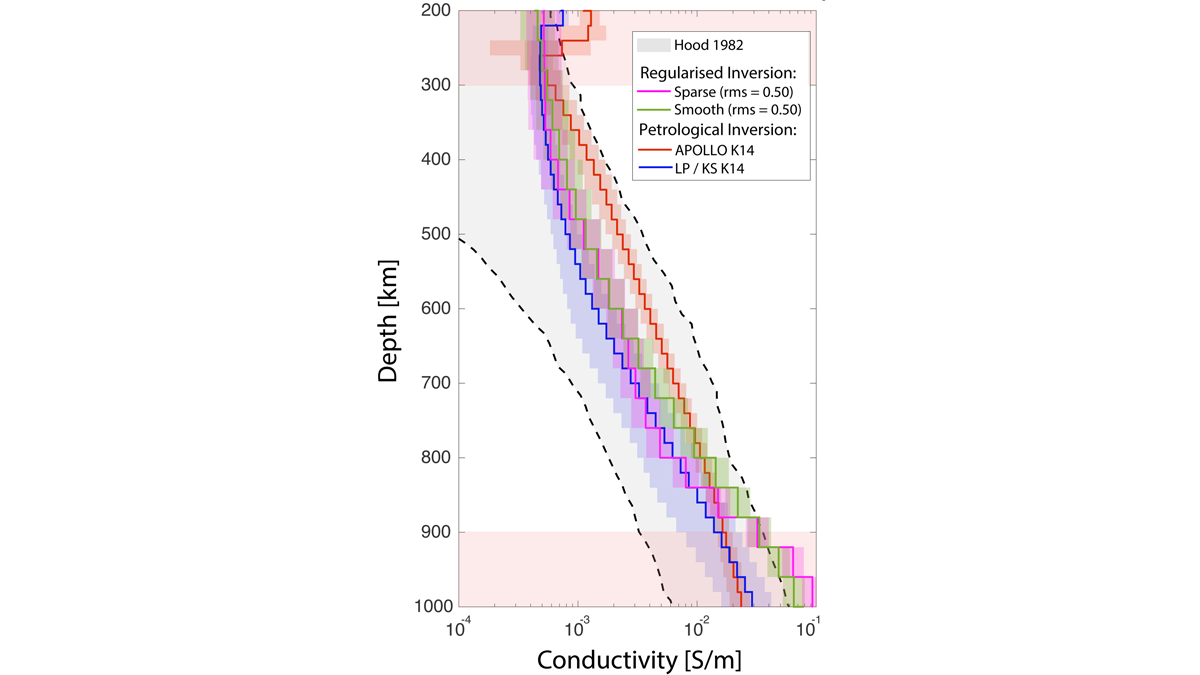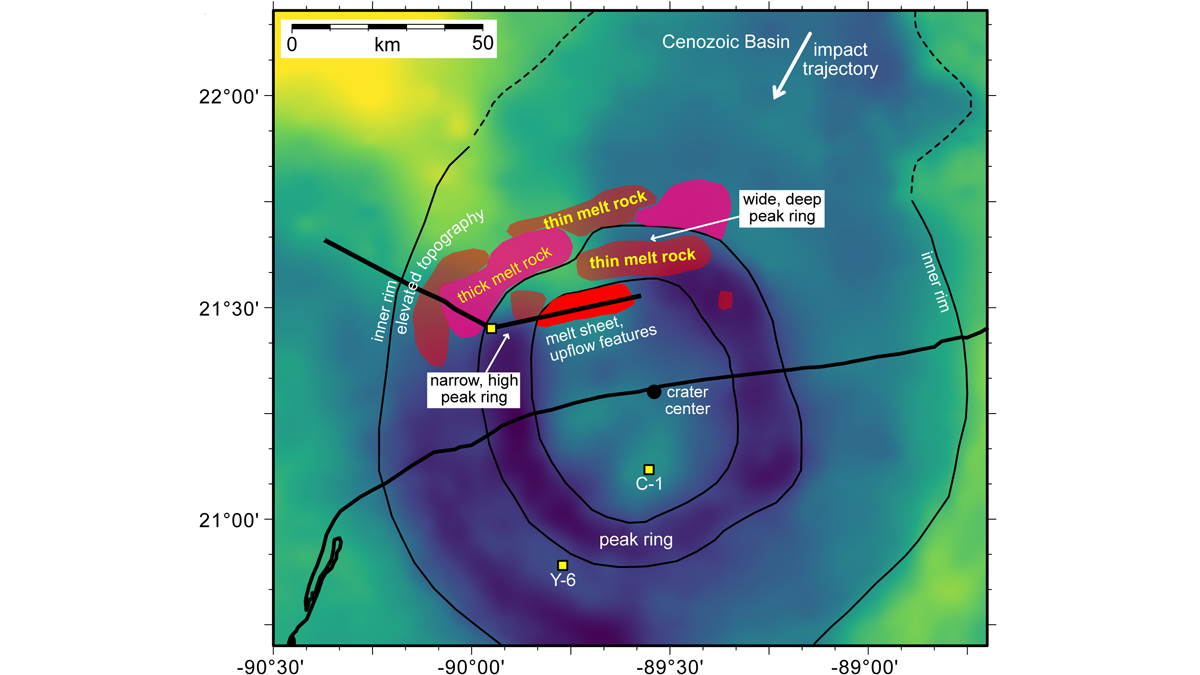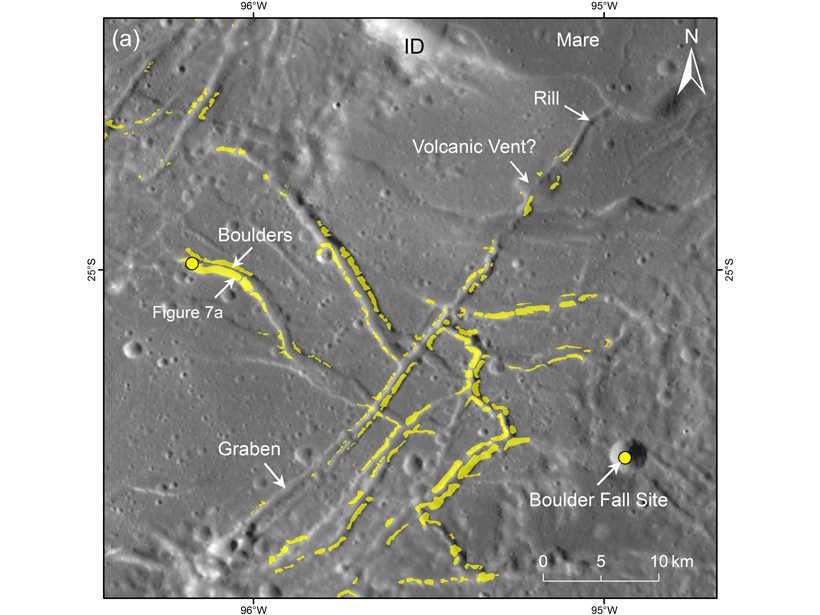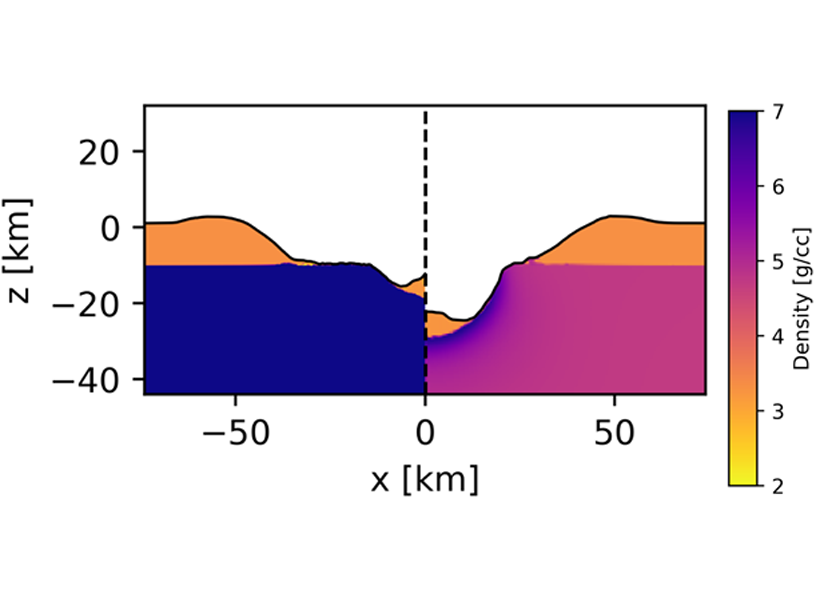Three-dimensional reconstructions enable virtual exploration of pits on the Moon.
Laurent G. J. Montési
Editor in Chief, JGR: Planets from 01 May 2019
An Impact Basin Thermometer for the Moon
Large impact basins on the near side of the Moon lack the annulus of thickened crust that far-side basins have. The difference can be linked to the thermal structure of the lunar crust.
A Better Look at the Moon’s Middle Mantle
A new analysis strategy sheds new light on the electrical conductivity of the lunar mantle between 300 and 900 km depth.
Shining a Spotlight on the Chicxulub Impact Crater
A new seismic survey of the Chicxulub impact crater reveals the structure of its peak ring and the sediments that cover it.
How Not to Homogenize a Planet
Even the strong heating from short-lived aluminium-26 (26Al) would not be able to homogenize the interior of a Mars‐sized planetary embryo.
The Tumbling Boulders of Orientale Basin
Mapping boulder fields and boulder tracks highlights the seismic hazard still present on the Moon.
What Happened When the Lithosphere of Venus Broke?
Although Venus does not have plate tectonics today, previous episodes of intense tectonic activity could have resulted in a distribution of crustal thickness and age resembling the plate we see today.
Predicting the Unique Shape of Craters on Asteroid (16) Psyche
Models link the variety of crater shapes expected on (16) Psyche with the interior structure of this unique asteroid, in preparation for the arrival of the Psyche probe in 2026.
Traces of Impacts on Warm Planetesimals Early in Solar System
Meteorite NWA 11004 contains evidence of melting preceding an impact dated to 4546±36 Ma. Short lived radioactive decay had already heated the parent body of this meteorite before the impact.
Ryugu: A Not So Magnetic Asteroid
When the lander MASCOT, carried by Hayabusa2, touched down on asteroid Ryugu, it did not detect a magnetic field, even though meteorites that are spectroscopically similar to Ryugu have trace of one.










